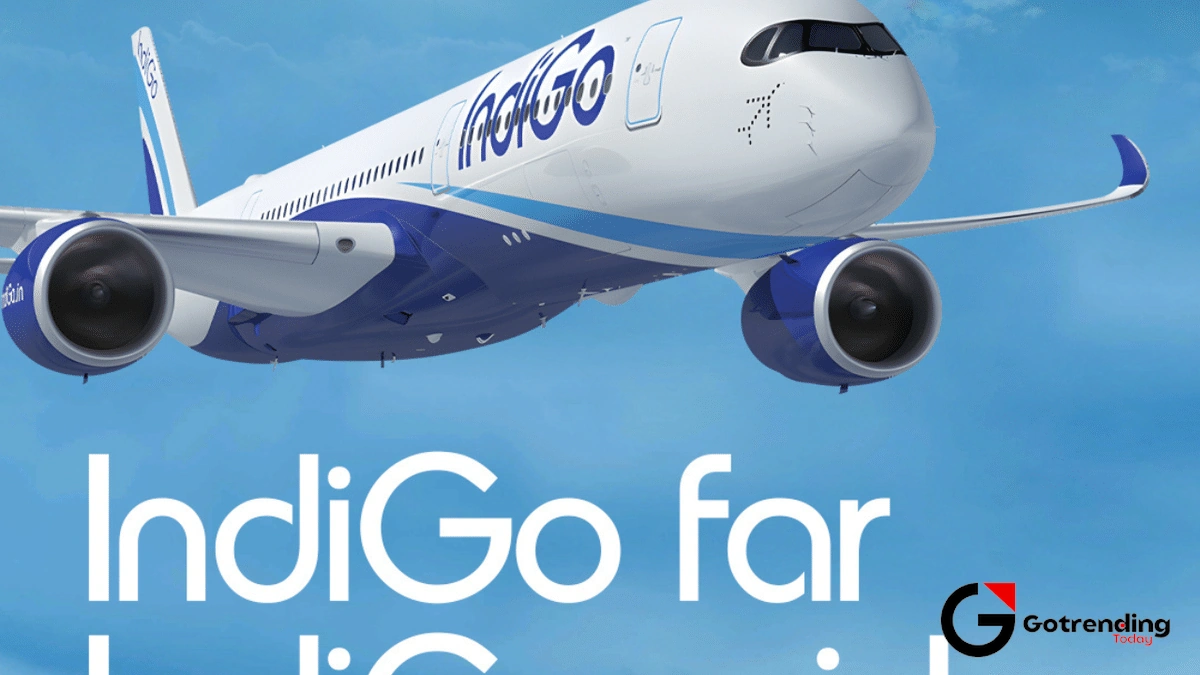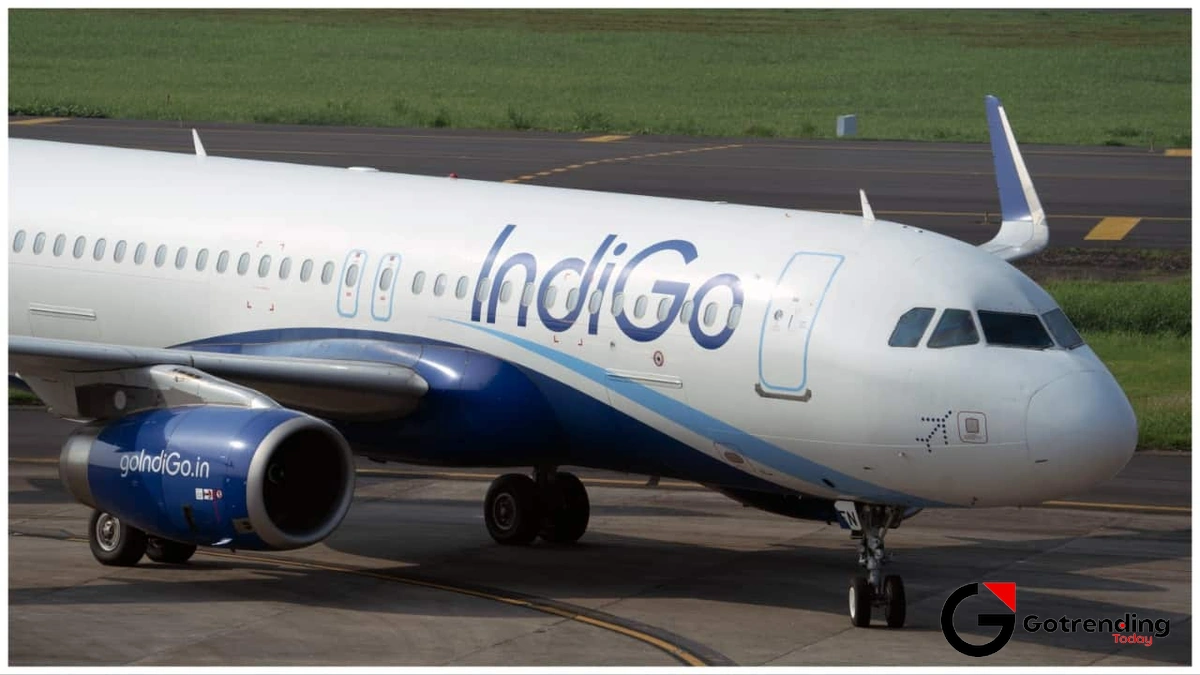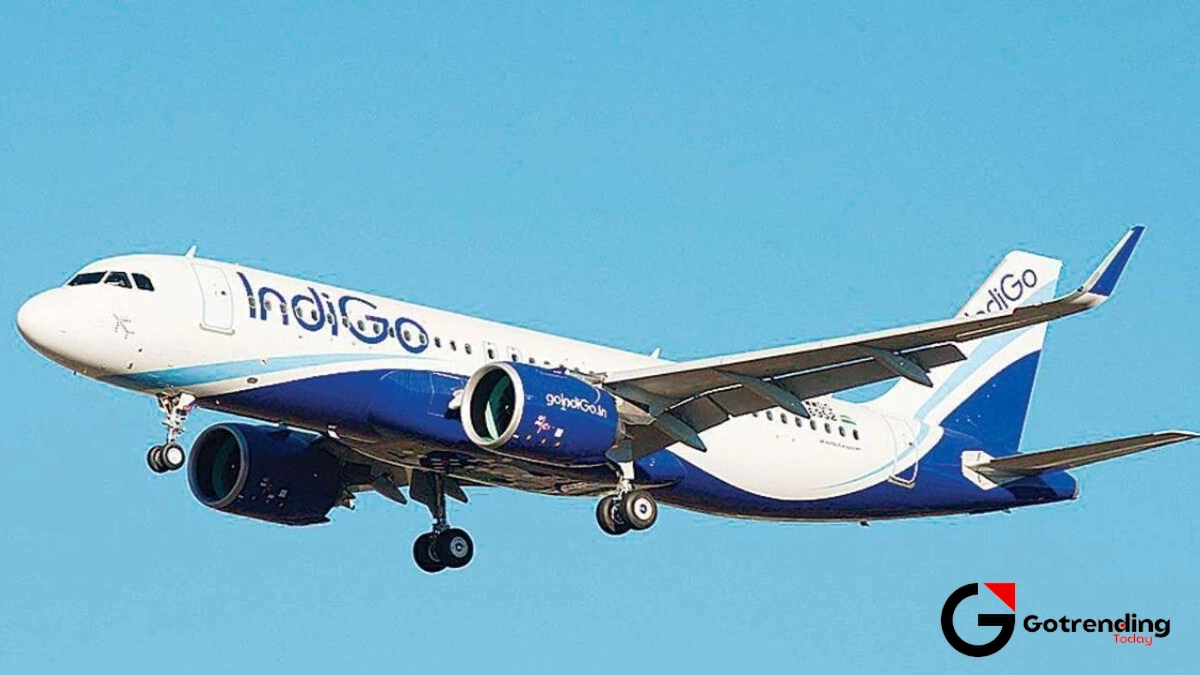The IndiGo Share Price | Why This Low-Cost Airline is Flying High on the Stock Market
Walk into any major Indian airport. Seriously, just stand there for five minutes and look at the tarmac. What do you see? A sea of blue and white tails. IndiGo, IndiGo, IndiGo. It’s a level of dominance that’s almost startling. You start to feel like you’re in their private terminal. And for a while now, the stock market has been feeling the exact same way. The indigo share price has been on a journey that makes some of its own A320s look slow.
But here’s the thing that gets me. We’re talking about a “low-cost carrier.” The entire business model is built on no-frills, on-time (mostly), and accessible pricing. So how does a company built on ‘low-cost’ end up with such a premium, high-flying stock? It’s a paradox, right? And that’s where the real story is. It’s not just about cheap tickets; it’s about a brutal, brilliant strategy playing out in one of the world’s most cut-throat aviation markets.
Beyond the Boarding Pass | What’s Fueling the Indigo Share Price?

If you’ve glanced at the indigo share price chart recently, you’ve seen it. A steep, almost relentless climb. It’s easy to get FOMO. But let’s take a breath and break it down. This isn’t just random market euphoria. There are some hard, cold facts behind this ascent.
First, and most obviously, is market consolidation. The sky got a lot emptier when Go First was grounded. That capacity didn’t just vanish; passengers flocked to the next most reliable and widespread option. And that was IndiGo. They didn’t just pick up a few extra flyers; they cemented their position as the undisputed king of Indian skies. Their market share rocketed past 60%, a figure that’s almost unheard of in a competitive aviation landscape. Think about it – more than every second domestic flyer in India is on an IndiGo plane. That’s insane.
And it’s not just about filling more seats. They’ve also gotten better at making more money from each seat. The industry calls it “yields.” In simpler terms, they’re commanding better prices. The post-pandemic travel boom has been a massive tailwind, with people willing to pay more to travel, and IndiGo has been perfectly positioned to capitalize on it. This combination of more passengers and higher fares is a potent cocktail for any airline’s bottom line.
The Turbulence You Don’t See on the Tarmac

Okay, so it’s all blue skies and record profits, right? Not so fast. This is the aviation industry we’re talking about – a sector famous for turning fortunes into dust overnight. To do a proper indigo stock analysis , you have to look at the clouds on the horizon.
The biggest, scariest monster in the closet is always the price of aviation turbine fuel (ATF) . It’s an airline’s single biggest expense. When crude oil prices spike because of some geopolitical mess halfway across the world, IndiGo’s finance team feels it immediately. They can hedge, they can strategize, but they can’t escape the fundamental reality: their planes need fuel, and fuel costs are wildly unpredictable. It’s a constant, nagging risk that investors have to be comfortable with.
Then there’s the engine trouble. You’ve probably heard whispers about it. The issues with the Pratt & Whitney engines on some of their A320neo fleet have been a massive operational headache. It means planes are grounded when they should be in the air making money. It’s a complex, frustrating problem that costs them a fortune in maintenance and lost revenue. While they’re managing it, it’s a significant drag on their efficiency. I remember reading about the latest updates on this, and it feels like a never-ending saga, almost as complex as the plot of the upcoming War 2 movie .
And let’s not forget competition. Sure, they’re the top dog now, but the sky is a tempting place. Air India, under the Tata Group’s deep pockets, is waking up. They’re ordering hundreds of new planes and are dead set on reclaiming their “Maharaja” status. It won’t happen tomorrow, but it’s a long-term threat that IndiGo can’t ignore.
Reading the Flight Path | The 500-Plane Bet
This brings me to what I find most fascinating about InterGlobe Aviation (that’s the parent company, by the way). Their ambition. While grappling with engine issues and fuel costs, they went ahead and placed a firm order for 500 Airbus A320 family aircraft.
Five. Hundred.
Let that number sink in. It’s one of the largest aircraft orders in history. This isn’t a company playing defense. This is a company betting everything on the future of the Indian aviation market . They’re looking at the demographics, the rising middle class, the fact that millions of Indians have yet to take their first flight, and they’re saying, “We’re going to be the ones to fly them.” It’s an audacious, long-term vision. They’re essentially planning to double their fleet size over the next decade. This strategy is what excites analysts and pushes up the indigo share price target , but it’s also a massive gamble. As detailed on their company about page , their mission is vast. It’s a bet that the Indian growth story isn’t just real, but that it will have wings.
Actually, it’s more than a bet. It’s a calculated strategy to create a moat so wide that new competitors will find it almost impossible to cross. By securing production slots for the next decade, they’re not just buying planes; they’re also making it harder for rivals to get them. It’s a move straight out of a strategic business textbook. It’s like pre-ordering every new smartphone so your friends can’t get one – a strategy some might even try with the new Vivo X200 FE .
Frequently Asked Questions About the Indigo Share Price
I get a lot of questions about this stock, so let’s tackle a few of the most common ones.
So, is IndiGo a good long-term investment?
Look, nobody can give you financial advice, but here’s how to think about it. The bull case rests on India’s growth and IndiGo’s market dominance. If you believe more Indians will fly over the next decade, IndiGo is poised to benefit massively. The bear case rests on the immense risks: fuel price volatility, fierce competition from a resurgent Air India, and execution risk on their massive fleet expansion . It’s a high-growth, high-risk play typical of the aviation sector.
What’s the biggest risk for InterGlobe Aviation’s stock right now?
I’d say it’s a tie between two things. Externally, a sharp and sustained rise in crude oil prices is the number one threat to profitability. Internally, the ongoing Pratt & Whitney engine issue is a major headache. If they can’t resolve this efficiently, it will continue to be a drag on their performance and could limit how effectively they can deploy their new aircraft.
Why do people keep talking about Go First when discussing the IndiGo share price?
Because the Go First crisis was a gift to IndiGo. When a major competitor suddenly stops flying, all its passengers and routes are up for grabs. IndiGo, with its extensive network and available aircraft, absorbed a huge chunk of that market. It accelerated their dominance by several years, and the stock price reflects this much stronger competitive position.
I see it listed as InterGlobe Aviation Ltd. on the NSE. Is that the same as IndiGo?
Yes, great question! It’s a common point of confusion. InterGlobe Aviation Ltd. is the publicly-listed parent company that owns and operates the airline brand we all know as IndiGo. So when you’re buying the stock, you’re buying shares in InterGlobe Aviation.
I keep coming back to that image of the tarmac. That sea of blue. The indigo share price story isn’t just about a stock; it’s a proxy for the ambition of the Indian consumer. It’s a bet that the aspirations of a billion-plus people will increasingly involve a boarding pass. The journey ahead will undoubtedly have turbulence it always does in aviation. But for now, IndiGo has a clear flight plan, a full tank of fuel (metaphorically speaking), and a destination set on market domination. Watching whether they land it perfectly will be one of the most interesting stories on the Indian stock exchange for years to come.













